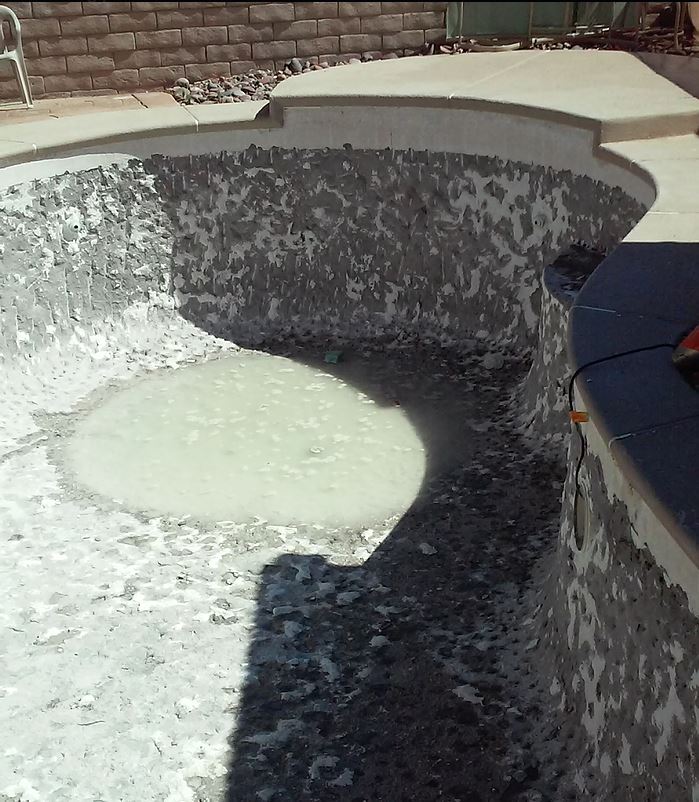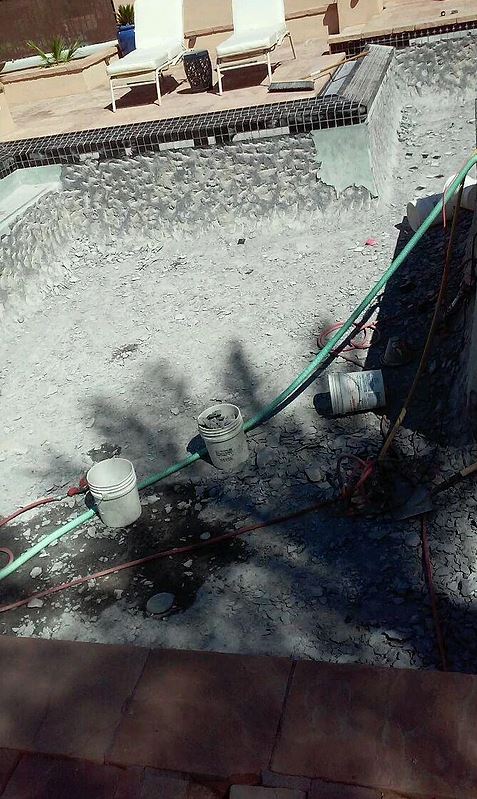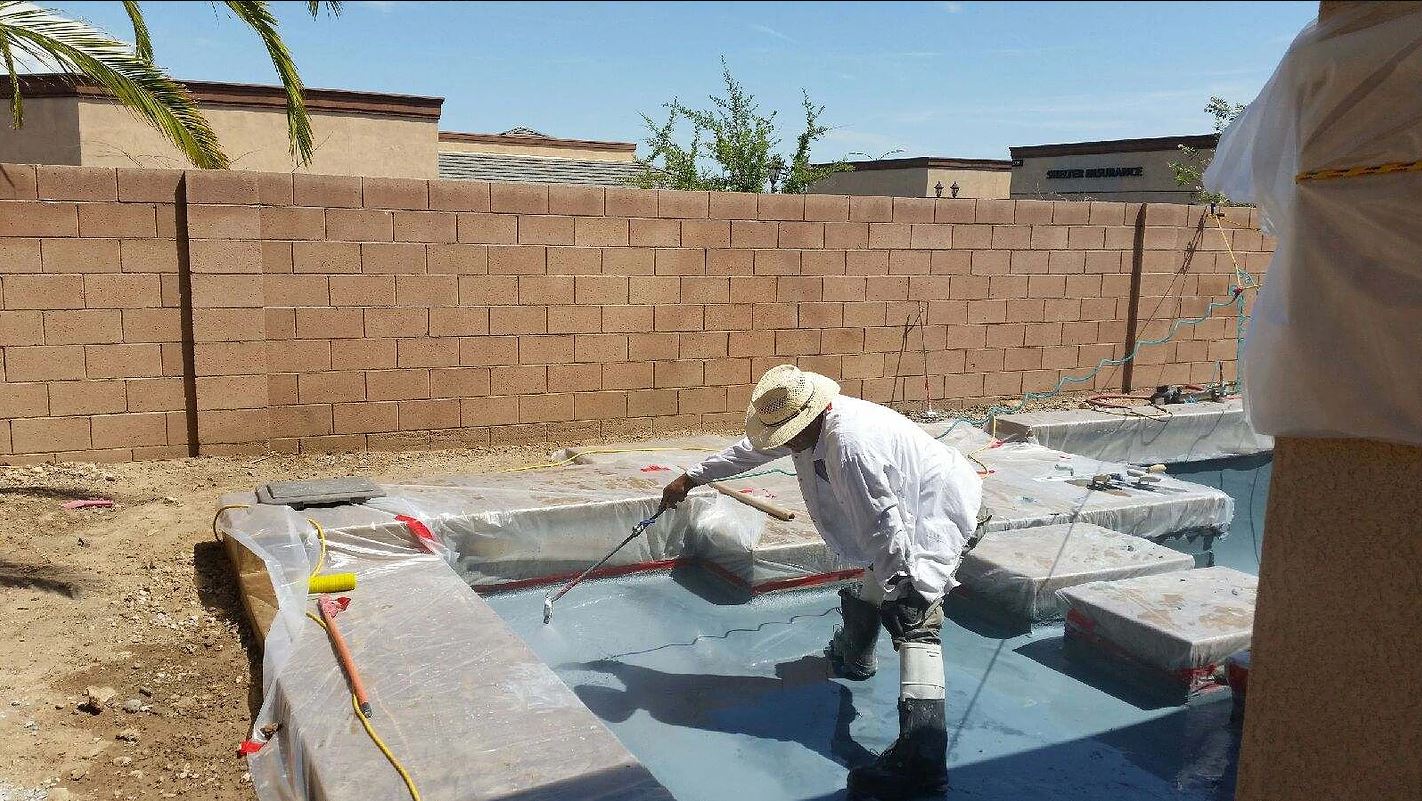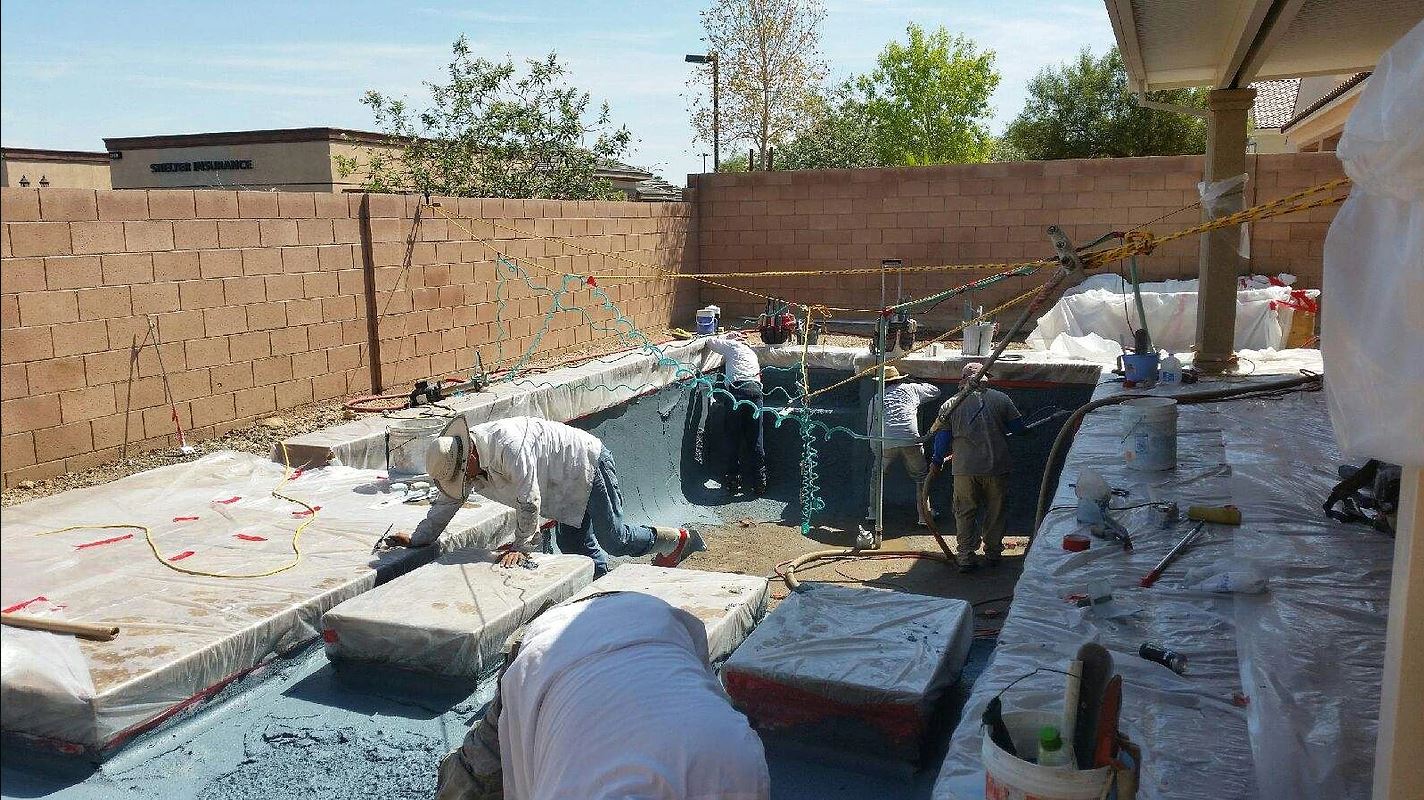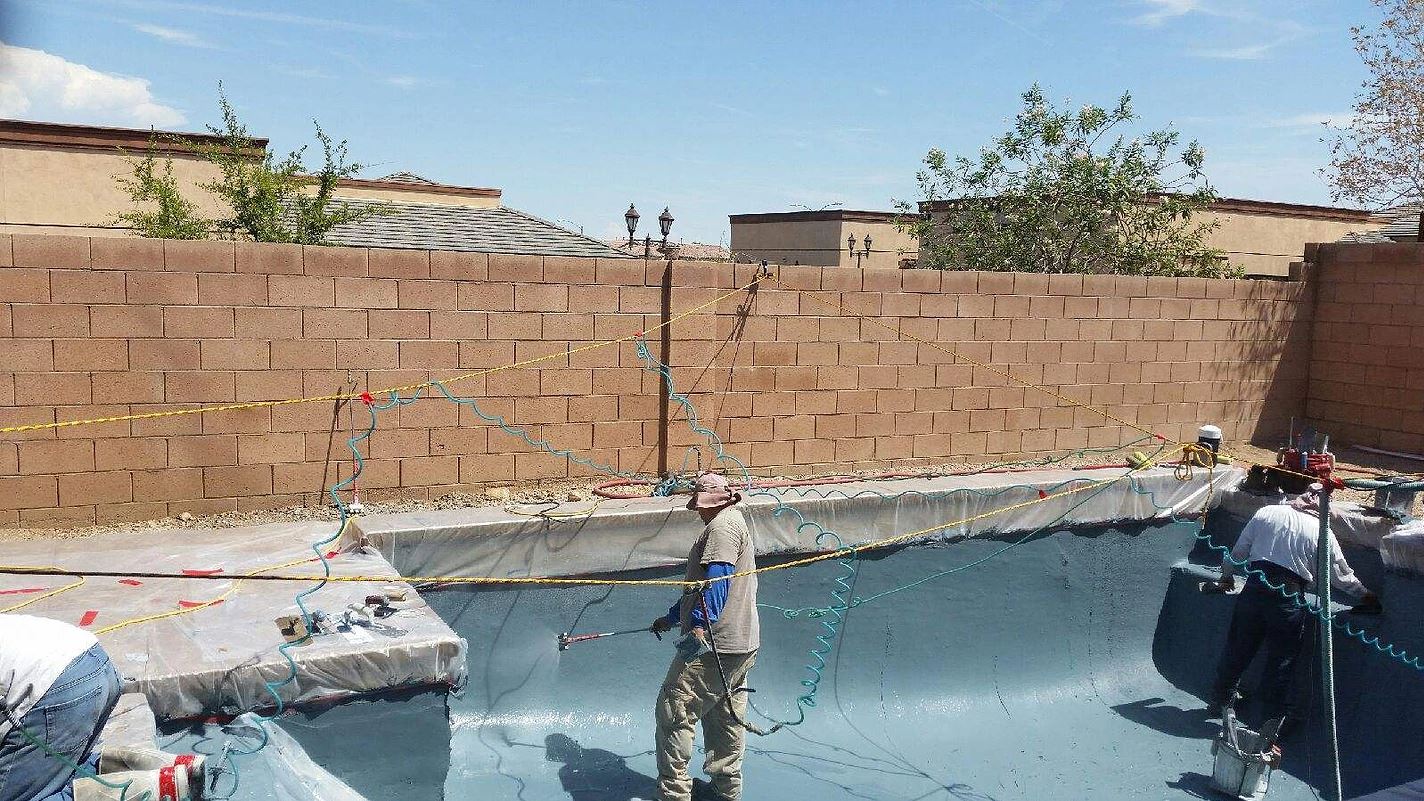Pool Plastering Process
Pool surface is prepped, for a renovation/replaster project, the replaster
is a completely different process from plastering a brand new pool. Many homeowners tend to think that a replaster process is the same as new pool plaster project, but it is not. The reason is you are dealing with a completely different bond between the finish and the sub-straight (foundation). You are working with an existing product as opposed to a new product.
The installation of a new plaster surface causes fluctuations in the water chemistry. The alkalinity, pH and calcium levels will rise while the surface is curing. The new plaster is susceptible to staining and discoloration during the first four weeks. The proper curing procedures will help reduce these imperfections plus scaling, pitting and gray streaks or spots. These procedures will also reduce the amount of “plaster dust” on the pool surface and will result in a smoother finish for the pool users to enjoy.
POOL REPLASTER – WHAT TO EXPECT STEP-BY -STEP
The process of remodeling your pool:
Traditional refinishing process:
- Drain pool.
- Prepare surface for bond coat, it must be dirt, oil or other foreign material free (acid/pressure wash if needed).
- Remove hollow areas when applicable.
- Remove and replace existing tiles, if applicable.
- Cut and chip old plaster from under existing perimeter tiles and around all return lines for a better transition of new plaster.
- Apply a bond coat containing cement glue to ensure that new plaster will adhere to old plaster.
- Apply 3/8” to ½” plaster, trowelled to a hard smooth finish.
- Fill pool with water.
Process for pebble finishes:
- Drain pool.
- Prepare surface for bond coat, it must be dirt, oil or other foreign material free (acid/pressure wash if needed).
- Remove hollow areas when applicable.
- Remove and replace existing tiles, if applicable.
- Cut and chip old plaster from under existing perimeter tiles and around all return lines for a better transition of new plaster.
- Apply bond coat containing cement glue to ensure that pebble finish will adhere to old plaster.
- Apply average ½ inch pebble finish.
- Next day acid wash to expose pebble.
- Fill pool with water.
NEVER USE SOFT WATER TO FILL YOUR NEW POOL PLASTER! IT COULD DISSOLVE THE PLASTER!
Saltwater pools start off on chlorine for the first two weeks, following plaster. It takes two weeks for the plaster to cure completely. Pool salt is composed of large granules, if it is added before the plaster has cured, it may crystallize on the plaster and cause it to have a rough texture.
